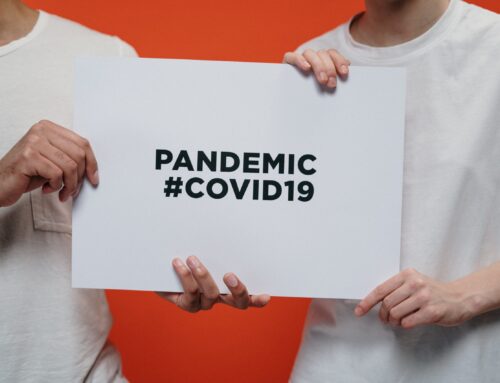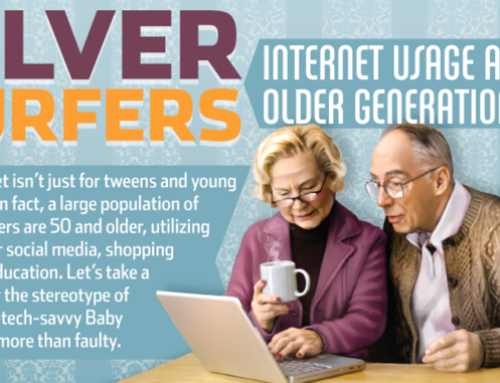301 Redirect
– Method of redirecting an old webpage to a new location. More simply, to display another web page for the web address that you are trying to visit. A 301 redirect tells search engines that the move is permanent (as opposed to temporary) and gives full domain authority to the new other URL.
404 error
– File not found. The server was unable to locate the URL.
Above the Fold
– A term traditionally used to describe the top portion of a newspaper.
Alt Tag
– An HTML attribute typically used within the IMG tag to provide alternate text when images cannot be displayed.
Analytics
– Software which allows you to track your page views, user paths, and conversion statistics based upon interpreting your log files or through including a JavaScript tracking code on your site.
Anchor Tag
– An HTML tag that allows you to create a link to another document or web page or to a bookmark within the current web page.
Anchor Text
-The keywords used in links.
Authority
– The ability of a page or domain to rank well in search engines. Five large factors associated with site and page authority are link equity, site age, traffic trends, site history, and publishing unique original quality content.
Backlink
– Links originating from one website and pointing to another website or web page.
Black Hat SEO
-Strategies used to “game” search engine results.
Blog
-“Web Log”. An online journal of sorts.
BLOOP
–Backlink Over Optimization
Bot
– Programs written to scour the web automatically for various reasons (to index web pages, for spamming purposes, etc.) aka web robots, web crawlers, internet bots, and spiders.
Cache
– Copy of a web page stored by a search engine. When you search the web, you are not actively searching the whole web, but are searching files in the search engine index.
Some search engines provide links to cached versions of pages in their search results, and allow you to strip some of the formatting from cached copies of pages.
Cloaking
– Showing a different web page to a search engine spider than what is normally seen. Method typically used by spammers.
CMS
– Content Management System. Tool used to help make it easy to update and add information to a website.
Conversion
– Web traffic that fulfills a pre-established goal, such as purchasing of a specific product or filling out a registration form, etc.
CSS
– Cascading Style Sheets. A language used to describe how a given page or web site will look. Used to control font styles, graphical layouts, color, etc.
CTR
– Click Through Rate. Standard method of measuring the success of an online advertising campaign. Calculated by dividing the number of users who clicked on an ad by the number of times the ad was shown.
DMOZ
– The Open Directory Project is the largest human edited directory of websites. DMOZ is owned by AOL, and is primarily run by volunteer editors.
Duplicate Content
– Content which is duplicate or near duplicate in nature. Search engines do not want to index multiple versions of similar content.
Dynamic Website
– A website whose content is not fixed. What is shown on a page is based on user-selected activities and/or programmatically driven.
Flash
– Vector graphics-based animation software which makes it easier to make websites look rich and interactive in nature. Search engines tend to struggle indexing and ranking flash websites because flash typically contains so little relevant content.
Google PageRank
– Sometime called “PR”, is a numeric value that represents how important a page is on the web.
htaccess
– Apache directory-level configuration file which can be used to password protect or redirect files.
Keywords
– Words that are used by search engines to determine the topic of a given web page.
Keyword Density
– How often a keyword or keyword phrase is used on a given web page.
Landing Page
– A content-rich web page geared around a particular topic, product or conversion goal. Typically a main navigation item of a website.
Meta Tags
– Web page specific, descriptive information that helps a search engine identify the purpose and topic of a given web page. Common meta data include a web page’s description and keyword listing.
No follow
– Attribute used to prevent a link from passing link authority. Commonly used on sites with user generated content, like in blog comments.
Organic Results (AKA Natural Results)
– Search results in a search engine that are not paid advertisements. The results that come up naturally based on their indexing within a search engine. Organic search results are good. We all want to come up on top for organic searches using keywords we are optimized for.
PPC
-Pay-per-click. Marketing a website in the auction based sponsored section of the Search Engine.
Paid Directory Links
– Major search engines like Google automatically assign more value to sites that have backlinks from sites like Business.com and Best of the web.
Paid Link Building
– Websites who are willing to link back to your site for a fee in order to boost your rankings/weight in the search engines.
Reciprocal Link
– The practice of placing a link from website A to website B strictly because website B is linking to website A.
Robots.txt
– A file which sits in the root of a site and tells search engines which files not to crawl.
ROI
– Return on Investment is a measure of how much return you receive from each marketing dollar.
Search Engine
– Web site whose function is to help users find web pages on any given searched topic.
SEM
– Search Engine Marketing. The act of marketing a website via search engines, whether this be improving rank in organic listings, purchasing paid listings or a combination of these and other search engine-related activities.
SEO
– Search Engine Optimization. The act of altering a web site so that it does well in organic listings of search engines.
SERP
– Search Engine Results Page. The listing of web pages that a search engine shows a user once they’ve entered a search value.
Site Map
– Page which can be used to help give search engines a secondary route to navigate through your site.
Spider (AKA ‘Bot)
– Programs written to scour the web automatically for various reasons (to index web pages, for spamming purposes, etc.) aka web robots, web crawlers, bots, and internet bots.
Static Website
– A website or web page whose content is fixed (does not change or has to be manually changed).
Title Tag
– A Meta data element that determines the actual “title” of a given webpage. The title is what shows up in the top bar of your browser. It is also the hyperlink that shows in search engine results listings.
URL
– Uniform Resource Locator. Or, more commonly, a web address.
W3C
– The World Wide Web Consortium (W3C) is an international consortium where web standards and guidelines are developed.
Definitions provided courtesy of Sweet Spot Marketing.



